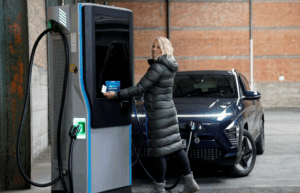
Home / EV Charging News / Energy equity: Ensuring Accessible and Affordable Electric Cars and Charging Infrastructure for Everyone
Electric cars and charging infrastructure are rapidly transforming the transportation sector, promising to reduce greenhouse gas emissions, improve air quality, and boost energy security. However, to realize the full benefits of this transition, we must ensure that electric cars and charging infrastructure are accessible and affordable for everyone, regardless of their income or location. In this article, we will explore the concept of energy equity and why it matters for the adoption of electric cars and charging infrastructure.
Energy equity refers to the fair distribution of energy benefits and costs across different populations, particularly those who are historically disadvantaged or marginalized. Energy equity recognizes that access to reliable and affordable energy is essential for meeting basic needs, such as heating, cooling, lighting, and transportation, as well as for achieving broader social, economic, and environmental goals. Energy equity is not just about ensuring access to energy, but also about ensuring that the benefits of energy use are shared fairly among all members of society.
Electric cars and charging infrastructure have the potential to significantly reduce the environmental impact of transportation, particularly in urban areas with high levels of air pollution. However, if only wealthy or privileged individuals can afford to purchase electric cars or access charging infrastructure, the benefits of this transition will not be shared equitably across society. In addition, if charging infrastructure is only available in certain neighborhoods or regions, it may exacerbate existing disparities in transportation options and limit the mobility of low-income and marginalized communities.
To ensure energy equity in electric cars and charging infrastructure, we need to address several key challenges:
Governments play a crucial role in promoting energy equity by implementing policies and programs that ensure the fair distribution of energy benefits and costs. For electric cars and charging infrastructure, governments can take several steps to promote energy equity, such as:
In addition to government action, the private sector and community organizations can also play a role in promoting energy equity for electric cars and charging infrastructure. For example, car manufacturers can offer financing options that are accessible to low-income households, or partner with community organizations to provide education and outreach on electric cars. Community organizations can also advocate for policies that promote energy equity, or work to establish community-owned charging infrastructure that is accessible to all members of the community.
Ensuring energy equity in electric cars and charging infrastructure not only promotes a more just and sustainable energy system, but it also has several other benefits:
Energy equity is a critical consideration for ensuring that electric cars and charging infrastructure are accessible and affordable for everyone, regardless of income or location. By addressing the challenges of energy equity through government action, private sector initiatives, and community engagement, we can create a more just and sustainable energy system that benefits all members of society.
